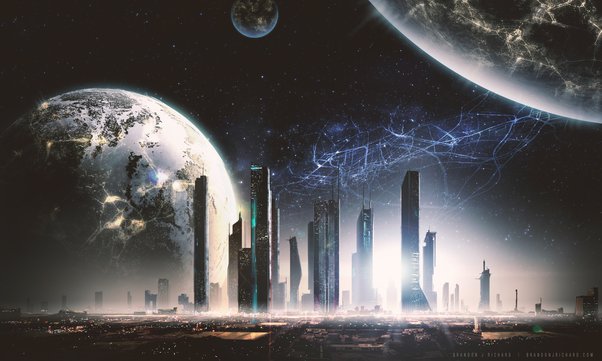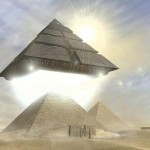In 1964, Soviet astronomer Nikolai Kardashev conceived the levels of extraterrestrial civilizations based on their ability to control different energy technologies, categorizing them into different civilization types. A cosmic civilization that can control the energy of stars in its planetary system is classified as a Type II civilization, capable of harnessing more than 10 billion times the energy output of our own Sun.
As early as the 1960s, physicist Freeman Dyson proposed the concept of a “Dyson Sphere,” a hypothetical megastructure built around a star to maximize energy collection. Though this idea was legendary, astronomers have since discovered celestial objects with similar features using infrared space telescopes. Stars shrouded in dust clouds can appear like “Dyson Spheres.”
According to observations from NASA’s Wide-field Infrared Survey Explorer (WISE), astronomers have identified stars enveloped in cosmic dust clouds. In the 1970s, astronomers conducted an infrared survey of 250,000 celestial objects and discovered 17 objects with features resembling Dyson Spheres. Richard Carrigan, a scientist at the Fermi National Laboratory, explained, “We can imagine that super-civilizations would first colonize the energy-rich regions of their own planetary systems and then expand to galaxies to obtain maximal energy.” Carrigan hoped to observe traces of giant “Dyson Spheres” in nearby galaxies. For Kardashev Type II civilizations, which not only transform individual stars into Dyson Spheres but possibly colonize entire star clusters for energy, the effects would be observable. For instance, we might detect anomalous dark regions in the galaxy, and some of the star’s energy would leak in the form of infrared radiation, creating observable bright emissions in infrared space telescopes, or they could be interpreted as thermal radiation from Dyson Sphere surfaces. The Andromeda Galaxy, M51, is considered an ideal place to search for Dyson Spheres. The Hubble Space Telescope and the Spitzer Infrared Space Telescope from NASA will observe countless star systems within the galaxy, tracking stars hidden by dust clouds. Carrigan roughly estimated that there should be no unexplained “bubbles” or gaps in the M51 galaxy. Giant elliptical galaxies, free from dust clouds, would present a strange phenomenon if unusual dark gaps were found within them. However, elliptical galaxies are at least 60 million light-years away, requiring larger space telescopes. The Hubble telescope currently provides sufficient resolution. In Kardashev’s classification, Type III civilizations, capable of harnessing all the energy within their entire galaxy, are the most advanced. Yet, existing astronomical observations have not identified any unexplained energy phenomena within entire galaxies. So, Type III civilizations either do not exist or have not appeared at least as of now.
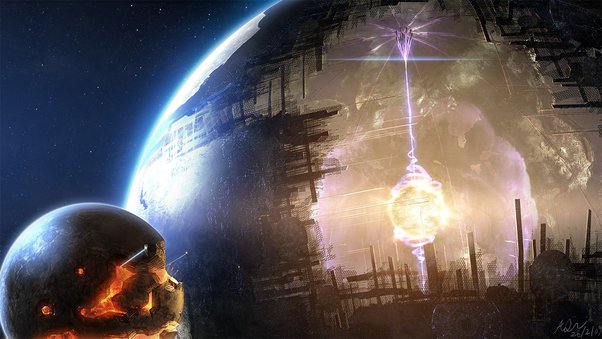
Classification Levels
Type I Civilization – Planetary Civilization (referred to as a “planetary civilization” because there’s no concept of a star system; this level of civilization centers around its home planet)
Type II Civilization – Stellar System Civilization (our solar system is an example of a stellar system; a stellar system consists of various celestial bodies revolving around a star, including planets, moons, asteroids, meteoroids, comets, and cosmic dust)
Type III Civilization – Galactic Civilization (our galaxy, the Milky Way, is an example of a galactic civilization; a galactic civilization is a collection of countless self-luminous and self-heating celestial bodies, i.e., stars)
Kardashev Scale
The “Kardashev Scale” is a classification used by cosmologists to categorize the developmental stages of extraterrestrial or human civilizations based on their energy usage. It was first proposed by Soviet astronomer Nikolai Kardashev in 1964. There are three designated categories known as Types I, II, and III, characterized by the available energy for the civilization and a certain level of space activity.
In general, a Type I civilization controls the resources of its planet, a Type II civilization controls the resources of its solar system, and a Type III civilization controls the resources of its galaxy. The number of highly advanced extraterrestrial civilizations decreases significantly with increasing levels, meaning they are quite rare.
Kardashev Levels of Humanity
Despite considering ourselves the most intelligent beings on Earth, as a civilization, we have not even reached Type I on the Kardashev Scale!
Futurist Michio Kaku believes that it will take several centuries to reach Type I. Type II could be achieved in a few thousand years, while the most advanced Type III would require an incredible one million years!
Carl Sagan attempted to calculate a specific Kardashev value that reflects the current progress of human civilization by considering intermediate values not initially accounted for in the original Kardashev scale. He proposed the following formula:

K = Kardashev value P = Power used by the civilization
Using the extrapolation method, he considered humanity to be a “Type 0” civilization, a category not originally defined by Kardashev. In 1973, he calculated the Kardashev rating to be 0.7, indicating that at the time, humans were clearly using 10 terawatts of power.
The current index for humanity is 0.73 (2×10 watts per second) (an increase of 0.1 in the index represents a tenfold increase in energy, and an increase of 0.01 in the index represents a 1.259-fold increase). Humanity would need to increase its current energy generation by thousands of times to reach Type I (these energies would create immense civilization wealth: abundant energy for active control of climate and geology, large-scale space activities, artificial intelligence-driven industrial activities, global transportation systems, communication systems, instant networks, and providing free wireless power to all of humanity, rendering commercial/financial sectors obsolete).
With continuous technological advancement, explosive/exponential growth is expected soon. It is projected that within a century, humanity will begin to reach the level of a Type I civilization, one that relies on nuclear fusion and space solar power.
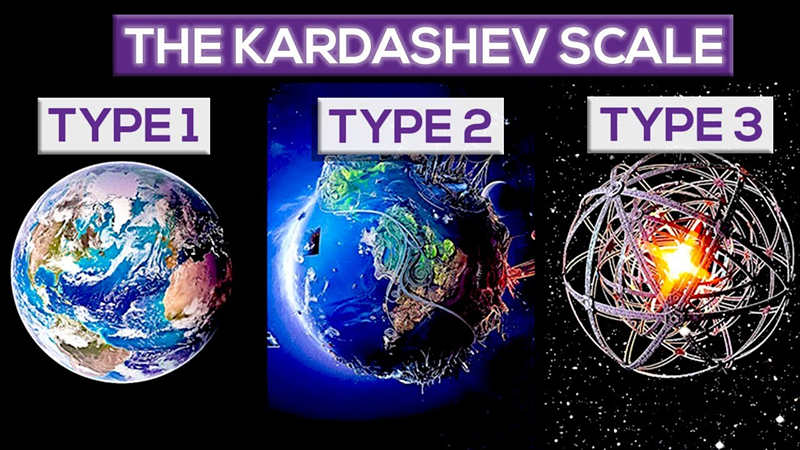
Type I Civilization:
(Planetary Civilization, capable of generating about 10 watts per second or 10 watts for civilization activities, roughly equivalent to the energy received by Earth from the Sun per second)
Earth can provide electrical power of 1.74×10 watts. The original definition was 4×10 watts. It is “relatively close to the current level of our civilization” (current as of 1964).
Range of civilization activities: Deep within Earth, deep within the oceans, in space orbits, and on nearby planets.
Type II Civilization:
(Stellar System Civilization, civilization activities collectively consuming about 4×10 watts per second (joules per second) of energy; this number varies due to the differing energies of stars)
Our Sun generates about 3.86×10 watts of energy per second, originally defined as 4×10 watts.
Range of civilization activities: The solar system and nearby star systems.
Type III Civilization:
(Galactic Civilization, civilization activities collectively consuming about 4×10 watts per second (joules per second) of energy; this number varies significantly between different galaxies; the output power is approximately the same)
Because different galaxies vary significantly in terms of energy, the output power is approximately the same. The original definition was 4×10 watts.
Range of civilization activities: Galaxy clusters.
(However, some argue that the Kardashev Index’s broad classification cannot necessarily reflect the existence of advanced civilizations accurately because we cannot predict their evolution and behaviors solely based on energy consumption. A highly advanced civilization might achieve “strange technology” levels with relatively low energy consumption. They could possess the technology to generate and utilize energy without substantial consumption.)

Another Classification
Type 1 Civilization:
A civilization at this level possesses scientific and technological capabilities that allow them to completely control all usable resources on their planet and everything else. They are the absolute rulers of their planet, capable of controlling weather, rivers, land, other life forms, oceans, and even changes in the Earth’s crust at will. They are essentially omnipotent on their planet.
Type 2 Civilization:
This civilization can fully harness the energy provided by their star (like our Sun) and has complete mastery over their solar system. They can freely inhabit and travel between the various planets in their solar system, with no energy concerns, as they know how to efficiently utilize the inexhaustible energy emitted by their star. Their society is highly advanced, and development is accelerating rapidly.
It’s worth mentioning that once a civilization reaches Type 2, they are almost indestructible. All known natural and artificial means, at least as far as humanity knows, cannot harm them. Even if a nearby supernova were to occur, it wouldn’t lead to their extinction. They could either move their star system away from the exploding star or harness the energy from the explosion. In highly advanced societies, they wouldn’t engage in self-destruction.
Type 3 Civilization:
This civilization is no longer limited to its solar system but encompasses an entire star system, such as our Milky Way galaxy. They can harness the energy from all the stars within their galaxy. These civilizations are beyond our imagination, and we can only speculate about how they might exist. According to Einstein’s theory of relativity, traveling faster than the speed of light is theoretically impossible. Galaxies are vast, and even at speeds approaching the speed of light, it would take millions of years to travel from one end to the other. So, Type 3 civilizations are not like the spaceships seen in science fiction, cruising through interstellar space.
Type 4 Civilization:
It is speculated that they harness dark matter and dark energy (which make up about 95% of the mass within the visible universe) as their energy source. Everything else about these civilizations is beyond imagination.

Ways Each Level of Civilization Could Be Destroyed:
Type 0: Natural disasters, diseases, war, resource scarcity.
Type 0+: Extreme weather disasters, nuclear wars, super-geological events, super-volcanoes and earthquakes, asteroid collisions.
Type 1: Asteroid or comet impact, artificial intelligence crisis, solar activity upheaval.
Type 1+: Artificial intelligence rebellion, solar aging and expansion, nearby supernova explosion.
Type 2: Interstellar warfare, super-high-energy stellar events.
Type 2+: Galaxy collision.
Type 3: Cosmic Big Bang.
Type 3+: Dissipation of consciousness.
(It’s worth noting that the power output of each civilization level goes far beyond just generating electricity; it involves using how much energy is required to sustain civilization activities. For example, a Type 1 civilization might control Earth’s climate and weather by using intelligent artificial clouds to block or intersect sunlight, so sunlight’s power, 1000 watts per square meter, is one aspect of the civilization’s power output.)
With each increase in level, the “total energy” of a civilization increases by a factor of 10, and the “mass” or “volume” of artificial objects built by the civilization increases by a factor of 10. The “size” of these objects increases by a factor of 2150.
Note: 2150 = 10
The ratio of the sizes (diameters) of artificial objects built by civilizations at different levels in the universe:
n = current level
[n + 1] = 2150[n]
[n.x + 0.1] = 2.155[n.x]
[n.xx + 0.01] = 1.07975[n.xx]
The ratio of the masses of artificial objects built by civilizations at different levels in the universe:
n = current level
[n + 1] = 10[n]
[n.x + 0.1] = 10[n.x]
[n.xx + 0.01] = 1.259[n.xx]
Civilization Activity Output Power/Second:
Type 1 Civilization = 10 watts
Type 2 Civilization = 10 watts
Type 3 Civilization = 10 watts
Total Mass of Cosmic Artificial Objects:
Type 1 Civilization = tens of millions of tons; 10 kg
Type 2 Civilization = billions of billions of tons; 10 kg
Type 3 Civilization = hundreds of billions of trillions of tons; 10 kg
Total Volume/Size of Cosmic Artificial Objects:
Type 1 Civilization = 10 cubic meters, 0.215 cubic kilometers; 0.215 km × 0.215 km × 0.215 km
Type 2 Civilization = 10 cubic meters, 100 billion cubic kilometers; 463 km × 463 km × 463 km
Type 3 Civilization = 10 cubic meters, 100 trillion cubic kilometers; 10 km × 10 km × 10 km
The current index for humanity is 0.72, meaning:
Humanity’s output power is approximately = 10 × 1.259 × 1.259 = 1.6 × 10 watts
The accumulated total mass of artificial objects built by Type 0.72 civilization on a cosmic scale is in the tens of thousands of tons, with a volume in the thousands of cubic meters. This includes various in-orbit artificial satellites, probes, space stations, and laboratories.
For Type 1 civilizations, cosmic artificial objects include space solar arrays spanning tens of millions of square kilometers, space cities/ports, interstellar spacecraft, and more.
For Type 2 civilizations, cosmic artificial objects include stellar collector rings, artificial planets/rings, interstellar spacecraft, and more.
For Type 3 civilizations, cosmic artificial objects might include galactic core collector rings, artificial celestial bodies, wormholes, intergalactic spacecraft, and more.
Envisioning the Future:
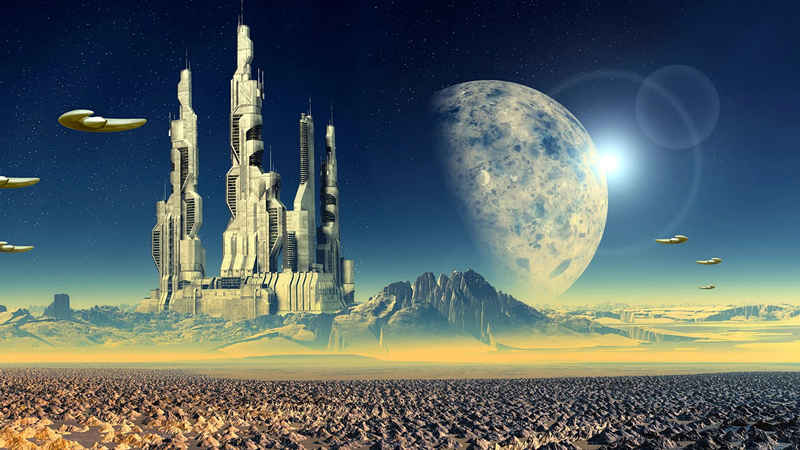
What will Earth look like 5,000 years from now, according to the Kardashev Scale?
Over the past 5,000 years, human technology has seen remarkable advancement, but it has also left scars on the Earth. We have altered landscapes, climates, and biodiversity. We’ve built skyscrapers for our survival and monumental tombs for the departed. Perhaps most importantly, despite harnessing some of Earth’s energy sources, we still need more energy.
How powerful will humanity be in the 71st century? This insatiable energy demand will determine the course of human civilization over the next 5,000 years. Thus, it will also shape Earth’s trajectory in the year 7010.
In 1964, Russian astrophysicist Nikolai Kardashev proposed a theory that links the technological progress of a civilization with the total energy under its control. According to this theory, he categorized the development of civilizations in the Milky Way into three types:
Type I: A civilization that controls the energy resources of its home planet, essentially having mastery over the energy on its world. Type II: A civilization capable of harnessing the energy of an entire star system. Type III: A civilization that can utilize the energy of an entire galaxy. Cosmologists use the Kardashev scale to predict future technological advancements and extraterrestrial civilizations. Currently, modern humanity hasn’t even crossed into any of these three types of civilizations. According to this framework, we are essentially at a zero-level civilization, but we will eventually transition to a Type I civilization, as predicted by Kardashev. When this transition will happen remains uncertain.
Theoretical physicist and futurist Michio Kaku predicts that this transition could occur within a century. Freeman Dyson, a physicist, suggested that humanity could reach a Type I civilization within the next 200 years. Kardashev himself envisioned that humanity would enter a Type II civilization after 3,200 years.
If humanity reaches only a Type I level by 7010 AD, we would have the ability to control and utilize atmospheric and geothermal energy. Although the threat of war and self-destruction may still loom, ecological issues would likely be a thing of the past by then.
If we successfully attain Type II status by 7010, humanity in the 71st century would have the freedom to wield greater technological power. Dyson proposed that at this stage, we could use vast arrays of satellites to collect energy from surrounding stars. Other grand ideas for Type II civilizations include interstellar travel and the ability to relocate entire planetary communities, depending on breakthroughs in genetics and computing.
Future humans may be culturally different from us today, and even exhibit neurological differences. They may very well be what futurists and philosophers predict as “post-human” or “transhuman.”
In any case, a lot will happen over the next 5,000 years. We might progress toward self-destruction through wars or unwittingly destroy our planet through nanotechnology. Perhaps we’ll face extinction from asteroid or comet impacts before mitigating these threats. It’s also possible that we’ll encounter extraterrestrial civilizations with advancements beyond our own before reaching Type II, potentially leading to conflicts over interstellar resources.
END:
In this article, we have explored the classification of different levels of civilizations and the potential ways they might face destruction. This classification system is based on the Kardashev scale and other scientific theories, helping us envision the position of human civilization in the cosmos and how we compare to potential extraterrestrial civilizations.
From the perspective of our current Earth civilization, we find ourselves at the 0.72 level. Compared to higher-level civilizations, our grasp of technology and energy resources still has a long way to go. However, this also serves as motivation for us to strive for greater advancements in science and technology, aiming to reach higher levels of civilization. Such progress will contribute to addressing the global challenges we face, such as climate change, resource scarcity, and diseases, propelling human civilization towards a more prosperous and sustainable future.
At the same time, we must remember to remain humble and cautious, regardless of the level our civilization attains. The universe is filled with the unknown, and we may encounter challenges and crises that are difficult to predict. Therefore, the opportunity to establish peace and cooperation with potential extraterrestrial civilizations is crucial. This will aid us in jointly exploring the mysteries of the universe and ensuring the continued growth of our civilization.
In conclusion, this classification system provides a fascinating window for us to contemplate the position and potential of human civilization in the cosmos. Whether our goal is to become a higher-level civilization or to preserve the current environmental state of Earth, this exploration deepens our understanding of ourselves and our role in this vast universe. Let us hope that we can maintain humility, innovation, and cooperation to achieve a brighter future ahead.
More UFOs and mysterious files, please check out our YouTube channel: MysFiles
Is the moon artificial? Evidence Proves the Moon Was Unnaturally Formed
